- Home
- Conn Iggulden
The Dangerous Book for Boys Page 16
The Dangerous Book for Boys Read online
Page 16
MEDICAL KITS
Whether this is intended for a house or emergencies will alter the contents. There isn’t much point putting athlete’s foot powder in an emergency kit. However, the basics are:
Band-Aids and scissors. Cloth bandages are the best and can be cut to any shape.
Triple antibiotic cream and an antiseptic.
Needle and thread. Stitching cuts is possible if the patient is unconscious. (Dogs will occasionally let you do this, though most of them struggle like maniacs.)
Painkillers. Ibuprofen also works as an anti-inflammatory drug, but can be dangerous to asthmatics. Aspirin is useful in cases of heart attack or a stroke as it thins the blood. Naproxen is good for muscle aches. Tylenol is good for pain and to bring down a high temperature. Oil of cloves can be dabbed on for tooth pain.
Bandages. Including one large square that can be folded diagonally into a sling.
Gauze pads to go under the bandage and soak up blood.
Lip balm.
High-SPF sunblock.
Tweezers and safety pins.
A couple of pairs of latex gloves.
Antihistamine pills for insect stings or allergic reactions.
If there is a chance of you needing antibiotics away from civilization, such as on a mountaineering trip, your doctor should supply a prescription. It will probably be for a general-purpose antibiotic, like amoxicillin.
The Fifty States
THE UNITED STATES of America consists of fifty states, no more, no less. If you are ever confused, you may count the white stars on our national flag to be sure, but it is probably simpler to just remember the number. Fifty. Not forty-nine, and not fifty-one. The U.S. has had fifty states since 1959, when Hawaii became part of the country.
Alaska is the biggest state, followed by Texas and then California. Rhode Island is the smallest. Washington D.C. would be the smallest, but as we know, it isn’t really a state, but a district set up in by Congress in 1790 to be the permanent center for our government. If D.C. was a state, there’d be fifty-one. And as we’ve already discussed, that would be just plain wrong.
STATE CAPITAL OFFICIAL NICKNAME
ALABAMA Montgomery Heart of Dixie
ALASKA Juneau The Last Frontier
ARIZONA Phoenix The Grand Canyon State
ARKANSAS Little Rock The Natural State
CALIFORNIA Sacramento The Golden State
COLORADO Denver The Centennial State
CONNECTICUT Hartford The Constitution State
DELAWARE Dover The First State
FLORIDA Tallahassee The Sunshine State
GEORGIA Atlanta The Peach State
HAWAII Honolulu The Aloha State
IDAHO Boise The Gem State
ILLINOIS Springfield The Prairie State
INDIANA Indianapolis The Hoosier State
IOWA Des Moines The Hawkeye State
KANSAS Topeka The Sunflower State
KENTUCKY Frankfort The Bluegrass State
LOUISIANA Baton Rouge The Pelican State
MAINE Augusta The Pine Tree State
MARYLAND Annapolis The Old Line State
MASSACHUSETTS Boston The Bay State
MICHIGAN Lansing The Great Lakes State
MINNESOTA St. Paul The North Star State
MISSISSIPPI Jackson The Magnolia State
MISSOURI Jefferson City The Show Me State
MONTANA Helena The Treasure State
NEBRASKA Lincoln The Cornhusker State
NEVADA Carson City The Silver State
NEW HAMPSHIRE Concord The Granite State
NEW JERSEY Trenton The Garden State
NEW MEXICO Santa Fe The Land of Enchantment
NEW YORK Albany The Empire State
NORTH CAROLINA Raleigh The Tar Heel State
NORTH DAKOTA Bismarck The Peace Garden State
OHIO Columbus The Buckeye State
OKLAHOMA Oklahoma City The Sooner State
OREGON Salem The Beaver State
PENNSYLVANIA Harrisburg The Keystone State
RHODE ISLAND Providence The Ocean State
SOUTH CAROLINA Columbia The Palmetto State
SOUTH DAKOTA Pierre Mount Rushmore State
TENNESSEE Nashville The Volunteer State
TEXAS Austin The Lone Star State
UTAH Salt Lake City The Beehive State
VERMONT Montpelier The Green Mountain State
VIRGINIA Richmond The Old Dominion State
WASHINGTON Olympia The Evergreen State
WEST VIRGINIA Charleston The Mountain State
WISCONSIN Madison The Badger State
WYOMING Cheyenne The Equality or Cowboy State
Map of the United States
* Red dots indicate state capitals
Mountains of the United States
IN THE UNITED STATES, in order to qualify as a mountain, a land mass must reach at least 1,000 feet (304.4 metres) from bottom to top. If the mass measures only 500 to 999 feet, sorry: it’s just a hill. (Less than 500 feet, and what you’re standing on is a knoll.)
Of course, many mountains are much taller than 1,000 feet. The highest mountain on earth is actually in Hawaii, though most of it is underwater, which makes climbing tricky, even for seasoned mountaineers. The more climbable tallest mountains are all in Asia: Mount Everest, which is part of the Himalayas, is the highest mountain on land at a whopping 29,028 feet above sea level. The tallest mountains in the continental United States are all on the Western side of the country—California, Colorado, and Washington, with the top ten tallest mountains all in Alaska:
Mount McKinley (Denali), 20,320 feet
Mount McKinley North Peak, 19,470 feet
Mount Saint Elias, 18,008 feet
Mount Foraker, 17,400 feet
Mount Bona, 16,500 feet
Mount Blackburn, 16,390 feet
Mount Sanford, 16,237 feet
South Butress, 15,885 feet
Mount Vancouver, 15,700 feet
Mount Churchill, 15,638 feet
Thirty-six percent of North America is covered by mountains. On the East Coast of the United States, the Appalachian Mountains separate the eastern states from the Great Lakes. The Mississippi River Basin is just to the west of the Appalachians.
The Ozarks—which cover territory in the southern half of Missouri, the northwest of Arkansas, the southeast of Kansas, and the northeastern part of Oklahoma—are sometimes called the Ozark Mountains, but they really aren’t mountains at all. The Ozarks are a plateau.
The Rocky Mountains, on the other hand, are definitely mountains. They begin in Canada and go all almost all of the way to Mexico. While most of the Rockies have gentle slopes and aren’t very tall, there are a few exceptions. The Teton Range, in Wyoming, is just south of Yellowstone National Park, and it has some impressive peaks: Grand Teton reaches 13,772 feet (4198 m) and Mount Moran measures a not-too-dainty 12,605 feet (3842 m). The highest peak of the Rockies, Mount Elbert, is part of the Sawatch Range, sometimes called the Saguache Range, which is in Colorado. Mount Elbert measures 14,440 feet (4,401 m), which may not as tall as Everest, but is impressive to look at nonetheless.
The Cascade Range, in California, is a series of volcanic mountains. Farther to the south is the Sierra Nevada, a very rugged moutain range that boasts the highest mountain in the contiguous United States, Mount Whitney. Mount Whitney reaches 14,505 feet (4,421 m).
The Pacific Coast Ranges cover the West Coast from Alaska all the way down to Mexico. In Alaska, the mountains appear as glaciers, while in Southern California, they are covered with shrubs and grasses. Many beautiful pictures have been photographed from the Pacific Coast Range. If you are lucky, one day you will travel there and watch the sun set over the Pacific Ocean.
Rocky Mountain National Park
Extraordinary Stories—Part Two
The Wright Brothers
Orville Wright (1871–1948)
Wilbur Wright (1867–1912)
UP UNTIL the tw
entieth century, man looked up at the skies, watched birds glide across the heavens, and imagined what it would be like to fly. Human flight was an unrealized dream until December 17, 1903, when two American men built and successfully flew the world’s first powered, controlled machine.
In 1878, twenty-five years earlier, a man named Milton Wright brought home a toy for his two young sons, Wilbur and Orville. It was a helicopter made of paper, bamboo, cork, and a rubber band, based on an invention by Alphonse Pénaud, a French aeronautics pioneer. The boys played with it until it broke—then they built their own.
As they grew, the Wright brothers became very interested in technology, specifically printing and bicycle mechanics. They ran a press and a factory that made bicycles. Today, only five bicycles built by the brothers are still known to be in existence.
Wilbur and Orville’s businesses made it possible for them to experiment in aeronautics. They began their experimenting in 1899, and one year later, they were ready to attempt to fly their first glider. They chose Kill Devil Hill, at Kitty Hawk in North Carolina. A meteorologist had recommended the site because it had such strong winds, and the brothers enjoyed the faraway location—one that would keep busy-bodies away from their work. They weren’t the only ones trying to build a flying machine.
The Wright brothers’ glider was a piloted aircraft that measured 11 feet, 2 inches long and 4 feet, 3 inches tall, with a 17-foot wingspan. It weighed only 52 pounds, and was crafted from 16-foot pieces of pine with wing ribs made of ash, and covered by one layer of French sateen fabric. The glider was a success: it flew.
The Wright brothers were onto something, and they kept on working. With every subsequent experiment, they improved on their previous designs. Three years later, at the end of 1903, they were ready to test a powered aircraft, one that provided its own energy instead of relying solely on the wind. In order to build their new flyer, they hand-carved the propellers, and had a man named Charlie Taylor built the engine at their Ohio bicycle shop.
In order to be able to fly with added weight from the engine, propellers, and reinforcements to the structure, they had to increase the wingspan to more than 500 square feet, up from 165 square feet on the glider. The flyer also had a three-axis control system and a rudder that could be moved. The right wing was designed to be four inches longer than the left to make up for the uneven weight of the horizontal, 4-cylinder, water-cooled 12-horse-power engine.
The day of the test, December 17, was bitterly cold, with winds were blowing at 27 miles an hour. The very first flight was conducted by Orville, who flew 120 feet in 12 seconds. In the fourth and last flight of the day, Wilber flew 852 feet in just under a minute. The altitude for their flights was about 10 feet. There were few witnesses, and only two newspapers wrote about the flight, one of them a local paper that got the story wrong.
The Wright Flyer later became known as Flyer 1, and later as Kitty Hawk. The original sketch of the 1903 Wright Flyer is at the Franklin Institute in Philadelphia. It was drawn in pencil on brown paper, with notes written by Wilbur. The original flyer can be seen in the Smithsonian Institution in Washington, D.C.
All airplanes created since have included the basic design of the 1903 Wright Flyer.
Making Cloth Fireproof
PERHAPS THE MOST impressive use for alum (potassium aluminum sulfate) is in fireproofing material. This could be very useful for tablecloths where there is a fire hazard, as in a laboratory or on a stage. It works with any porous cloth, but should not be considered foolproof. To demonstrate it, we used household rags.
First prepare a solution of alum and water. Hot water works best in dissolving the powder. 1 lb 1 oz (500 g) of alum dissolves easily in a pint of water. Dip the material you wish to fireproof in the solution and make sure it is completely covered. Remove immediately and leave to dry. Be careful not to let it drip onto valuable carpets. If you leave it outside and it happens to rain, it will probably still work.
Once dry, the cloth should be a little stiffer than usual, but otherwise unchanged. An untreated rag burned almost completely in twenty seconds. The treated rag could not be lit, though there was some light charring after thirty seconds of applied flame.
Building a Workbench
BEFORE WE COULD MAKE a number of the things in this book, it was obvious we needed a workbench. Even the simplest task in a workshop becomes difficult without a solid vise and a flat surface.
We kept this as simple as possible. Pine is easiest to cut, but it also breaks, dents and crushes, which is why classic workbenches are made out of beech—a very hard wood.
Complete beginners should start with pine, as mistakes are a lot cheaper. Planning is crucial—every table is different. Ours fitted the wall of the workshop and is higher than almost any workbench you’ll ever see. Both of us are tall and prefer to work at a higher level. Draw the plan and have an idea of how much wood you will need.
The suppliers cut the wood square to save time and we spent two days cutting mortice and tenon joints before assembling it.
RULE: Measure twice and cut once. Carpentry is 80% care and common sense, and 20% skill, or even artistry. You do not have to be highly skilled to make furniture, as long as you never lose your temper, plan carefully and practice, practice, practice. The reason a professional is better than an amateur is that the professional cuts joints every day.
TENON-AND-MORTISE JOINTS
A mortise is a trench cut into wood. The tenon is the piece that fits into the trench.
NOTE: Using sharp tools is not to be undertaken lightly. A chisel will remove a finger as easily as a piece of wood. Don’t try this unless you have an adult willing to show you the basics. There are hundreds of fiddly little things (like how to hold a chisel) that we couldn’t fit in here.
We started by making two rectangular frames to go at each end of the table workbench. This is a very simple design, but tenon- and-mortise joints are strong on the corners.
Make sure that the top of your tenon is not too close to the top of the upright. When it comes to cutting the mortise, you do not want to break through.
For simple “through” joints, the tenon length is the same as the width of the upright. To create the tenon, you have to make four saw cuts (accurately!) down to a marked line that is equal to the depth of the upright. In the picture, only the middle rectangle will remain. After the four cuts, you saw away the waste pieces and use a chisel to trim any splinters or roughness.
When you have your tenons cut, number them in pencil. Use the tenons as the template for the mortise trenches, also numbered. We also penciled a cross on the top side so we wouldn’t lose track. Obviously, they should all be identical, but it’s odd how often they aren’t. Mark the mortises with extreme care, taking note of the exact position. The first upright will be relatively easy, but the second has to be absolutely identical—and that’s where the problems creep in.
Next, cut the mortise. Great care is needed here—and some skill with the chisel. Take care also not to crush the edges as you lever backward. Ideally, you should use a chisel as wide as the mortise itself—though some prefer to use narrower blades.
Once you have your pair of end pieces, you need bars running lengthways to prevent wobble. We used mortice and tenons again, as the beech joints seemed easily strong enough for our needs.
In the picture, you can see that we put both beams on one side. We wanted to have access for storage underneath, so we left the front open.
The rope arrangement in the picture is called a “windlass.” It is used when a piece of furniture is too long to be clamped. Most tables will have this problem and it’s good to know you can overcome it with nothing more than a double length of rope and a stick to twist it tighter and tighter. The same technique has even been used to pull wooden ships out of the sea. Be sure to protect the wood with cloth, or you’ll cut grooves into your uprights.
The top planks can be glued together if they have perfect edges, or simply screwed in place. The simplest po
ssible method is to screw down into the end pieces, but this does leave ugly screw heads visible. We used a corner piece underneath, screwing across into the end piece and also up into the underside of the top. It worked well enough for our purposes.
To finish, we sanded like madmen for the better part of a day, used filler for the gaps we could not explain in the joints, then wiped it all over with linseed oil. The oil soaked in very nicely to seal the wood—just in case we spill paint on it in the future.
Pocket Light
THIS IS AN EXTREMELY simple circuit toy that will be instantly recognizable. It is also fun—and portable. You will need a tobacco tin—and they’re not easy to find these days. Ask at flea markets, or badger the elderly. Try to get more than one, in fact, as they are fantastically useful. Otherwise, an Altoids tin will work well.
* * *
You will need
A battery—ideally one of the square 9V ones.
A flashlight bulb.
Two pieces of bare wire about the length of a ruler.
Duct tape.
* * *
If you have access to a soldering iron, soldered connections are more reliable, but this can be made without one.
1.Attach one wire to the positive terminal of the battery (+). If you do use a soldering iron, make sure the battery is firmly held and don’t rush—it isn’t easy to place a blob of solder where you want it without it cooling down too fast.
2.Attach the end of the other wire to the end of the bulb, as in the picture. We soldered it. Using small strips of tape, you could hold it steady, but try not to cover the barrel of the bulb—you’ll need it for the last connection. Make a loop out of the other end, as shown.

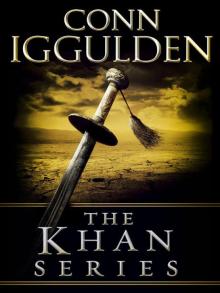 The Khan Series 5-Book Bundle
The Khan Series 5-Book Bundle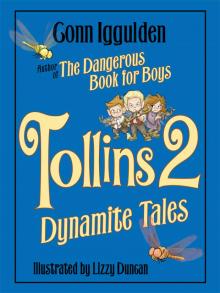 Tollins 2: Dynamite Tales
Tollins 2: Dynamite Tales Tollins: Explosive Tales for Children
Tollins: Explosive Tales for Children The Field of Swords
The Field of Swords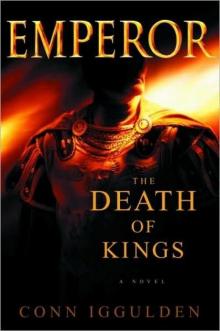 The Death of Kings
The Death of Kings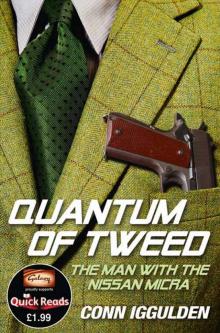 Quantum of Tweed: The Man With the Nissan Micra
Quantum of Tweed: The Man With the Nissan Micra Bones of the Hills
Bones of the Hills Genghis: Birth of an Empire
Genghis: Birth of an Empire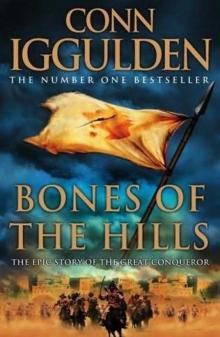 The Gates of Rome
The Gates of Rome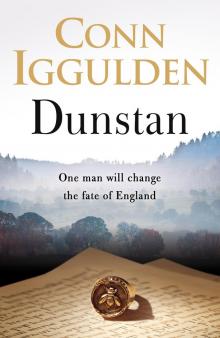 Dunstan
Dunstan Fig Tree
Fig Tree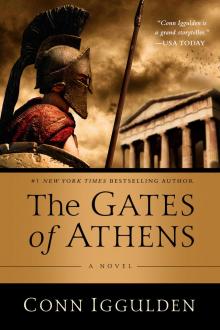 The Gates of Athens
The Gates of Athens Stormbird
Stormbird Khan: Empire of Silver
Khan: Empire of Silver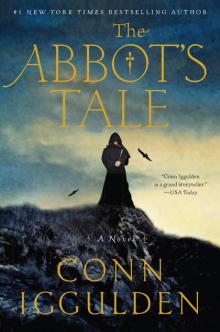 The Abbot's Tale
The Abbot's Tale Gengis: Lords of the Bow
Gengis: Lords of the Bow The Gods of War
The Gods of War Blackwater
Blackwater Ravenspur: Rise of the Tudors
Ravenspur: Rise of the Tudors Wars of the Roses: Trinity (War of the Roses Book 2)
Wars of the Roses: Trinity (War of the Roses Book 2) The Gods of war e-4
The Gods of war e-4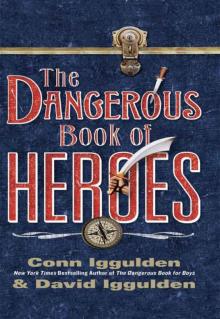 The Dangerous Book of Heroes
The Dangerous Book of Heroes Stormbird wotr-1
Stormbird wotr-1 Emperor: The Death of Kings
Emperor: The Death of Kings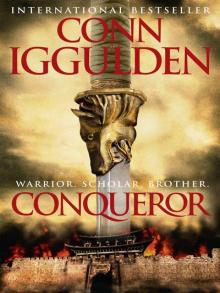 Conqueror (2011) c-5
Conqueror (2011) c-5 The Dangerous Book for Boys
The Dangerous Book for Boys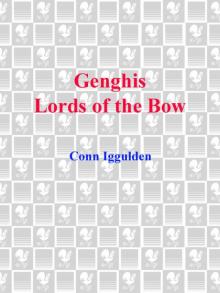 Genghis Lords of the Bow
Genghis Lords of the Bow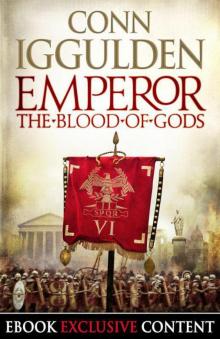 Emperor: The Blood of Gods (Special Edition) (Emperor Series, Book 5)
Emperor: The Blood of Gods (Special Edition) (Emperor Series, Book 5) The Emperor Series: Books 1-5
The Emperor Series: Books 1-5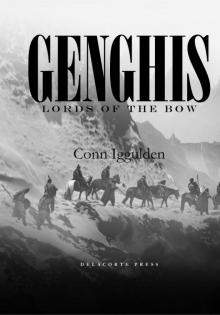 Lords of the Bow c-2
Lords of the Bow c-2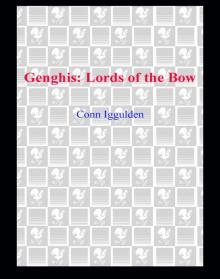 Lords of the Bow
Lords of the Bow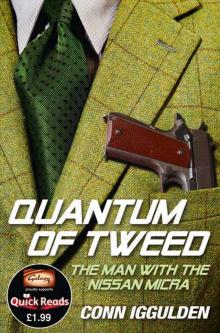 Quantum of Tweed
Quantum of Tweed Wars of the Roses 01 - Stormbird
Wars of the Roses 01 - Stormbird Empire of Silver c-4
Empire of Silver c-4 Birth of an Empire
Birth of an Empire Conqueror (2011)
Conqueror (2011) Wars of the Roses: Bloodline: Book 3 (The Wars of the Roses)
Wars of the Roses: Bloodline: Book 3 (The Wars of the Roses) Bones Of the Hills c-3
Bones Of the Hills c-3 Empire of Silver
Empire of Silver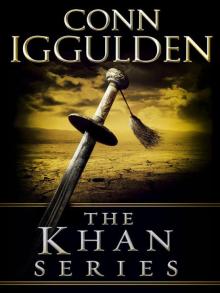 The Khan Series 5-Book Bundle: Genghis: Birth of an Empire, Genghis: Bones of the Hills, Genghis: Lords of the Bow, Khan: Empire of Silver, Conqueror
The Khan Series 5-Book Bundle: Genghis: Birth of an Empire, Genghis: Bones of the Hills, Genghis: Lords of the Bow, Khan: Empire of Silver, Conqueror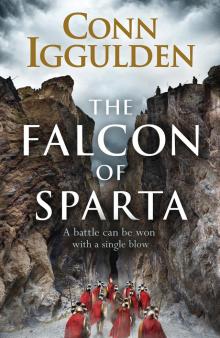 The Falcon of Sparta
The Falcon of Sparta Explosive Tales for Children
Explosive Tales for Children